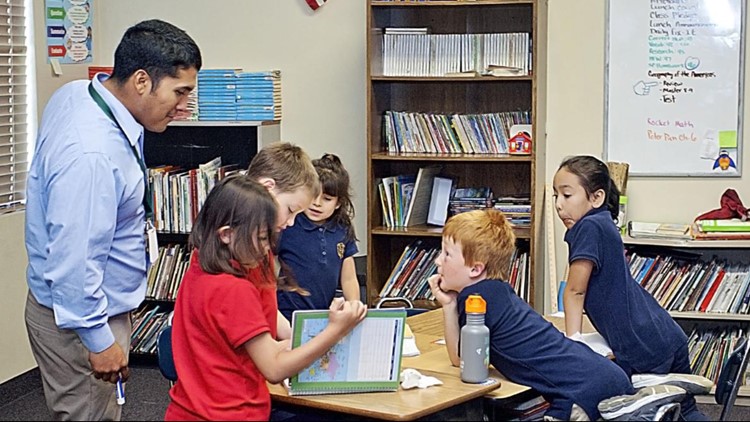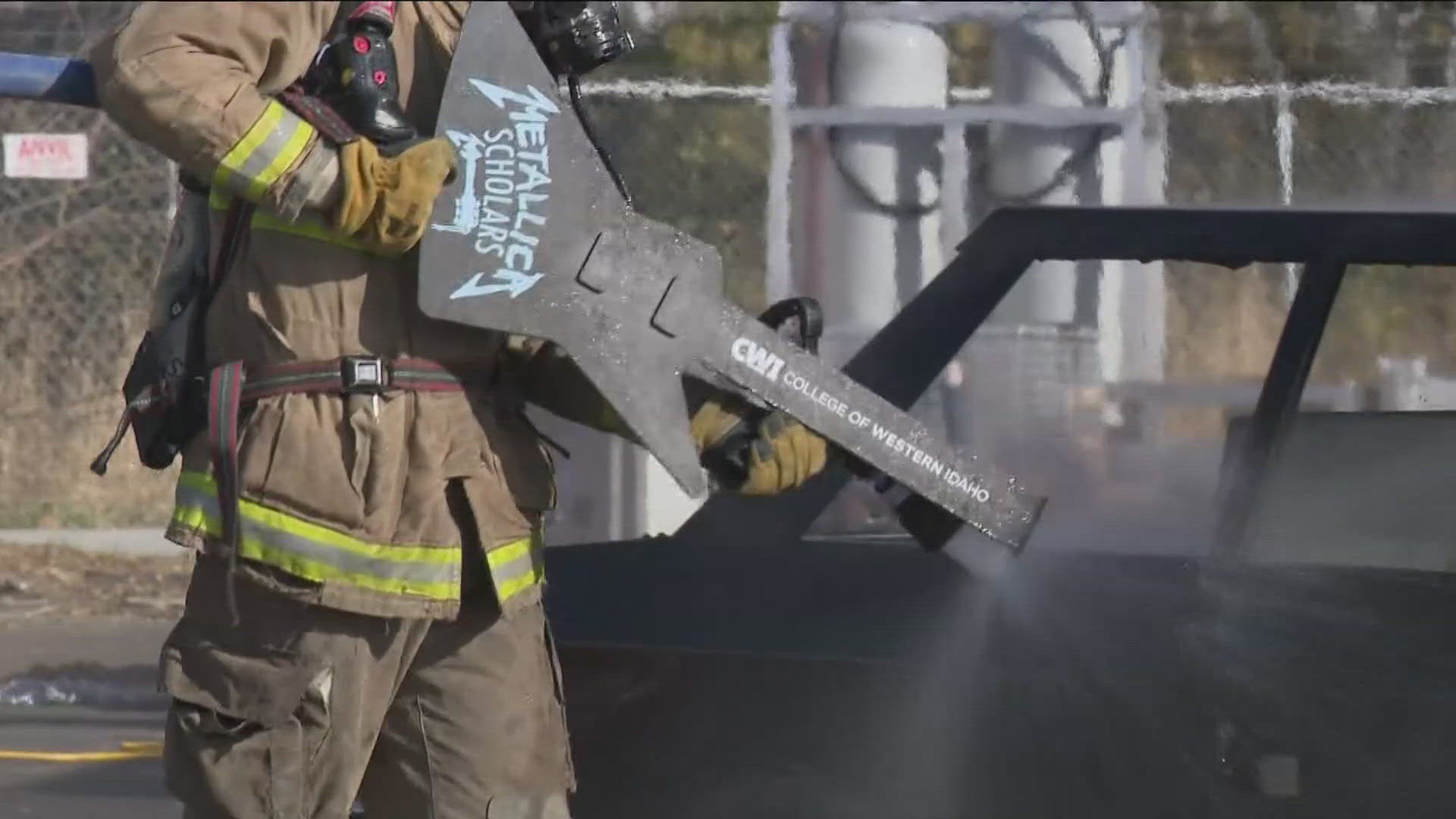CALDWELL, Idaho — Anthony Haskett wants his charter school to be representative of all communities in the Treasure Valley, so he’s starting early — even before breaking ground on the school — to recruit Latino students and educate their families on the charter school option.
Haskett is founding Mosaics Public School, a charter school scheduled to open next year. He said Idaho charter schools are not yet representative of “the population we want to serve.”
In 2015, Idaho public charter schools came under fire over the underrepresentation of students of color in their schools. Charter schools throughout the Treasure Valley are trying to change that, including Mosaics.
Mosaics plans to open for 300 students in kindergarten through fourth grade next August. It will serve the greater Caldwell area, where the school district is about 65% Latino.
Statewide, at the end of the 2018-2019 school year, 24,755 students were enrolled in Idaho charter schools. Of those 3,197 were Latino, or 12.9%, said Kris Rodine, spokeswoman for Idaho State Department of Education. The overall state’s population of Latino students was 18% during the same school year.
Another charter school in Caldwell, Heritage Community Charter, has been able to connect with a diverse population in its outreach. Heritage, which offers a dual-language immersion program, has a student body that is 56% Latino, Rodine said.
Javier Castaneda, principal and executive director of Heritage, said personal invitations to apply to Heritage are sent to families in both English and Spanish, and the school advertises in both languages.
“I believe our high Hispanic enrollment is due to a number of things including the draw of our Spanish dual immersion program and our advertising to all populations in our community,” Castaneda said. “We also make door-to-door visits in some of our communities where a high number of Spanish-speaking families reside.”
As a school that encourages students to be bilingual in English and Spanish, “we’re always encouraged to find students enrolled in our school who speak Spanish as a primary language at home,” Castaneda said.
To help reach out to underrepresented communities, Haskett said Mosaics wanted to include the term “public school” in its name, because one of the misconceptions about charter schools is that they require tuition.
“It is about understanding that you have to apply, understanding the lottery process,” Haskett said. “It is different than traditional public schools, you can’t just walk your kid in and sign up. Understanding the application process is something we are working on with the community, and knowing there is a deadline.”
Castaneda agreed that the most common misconception he has heard is that public charter schools charge tuition. Charter schools hold lotteries for enrollment, and students who do not get into the school are placed on a waiting list.
Terry Ryan, CEO of Bluum, a nonprofit working to open more charter schools in Idaho, said historically, charters have struggled to recruit Hispanic students in poverty and English-language learners.
“We haven’t done that well,” he said.
To help reach underrepresented groups, including Latinos, Ryan said local charter schools have made sure to have members on their school boards who speak Spanish and are Latino. Haskett said two members of Mosaics’ six member board speak Spanish.
Haskett said Mosaics representatives have been meeting with Community Council of Idaho and attending the migrant head-start parent meetings to get the school’s name out there and remind parents that charter schools are an option. They’ve also been going to Caldwell community events and hosting library events.
Ryan said Bluum conducted an online survey in 2015 and found many parents in Idaho thought charter schools were the same thing as private schools, that cost money.
“That is why having school leaders and teachers reach out to families is important,” Ryan said. “Families who are new to the area would normally just go to the school district and would enroll in their neighborhood school. Awareness is a big part of it.”
Ryan added that schools have a “responsibility to get the word out.”
HISTORY WITH UNDERSERVED GROUPS
In 2015, The Center for Community and Justice, an Idaho nonprofit aimed at improving education for Latinos, filed a formal complaint with the Office of Civil Rights of the U.S. Department of Education saying minority students are underrepresented in publicly funded charter schools in the state.
They cited students with limited English education, students with disabilities and students from low-income families.
In the complaint from May 2015, CCJ staff attorney Les Bock, a former state senator, wrote, “Idaho officials have turned a deaf ear to CCJ’s concerns and refused to engage in any meaningful discussion. These officials have suggested the lack of Latino students in Idaho’s charter schools is the fault of the parents; i.e, Latino parents have irresponsibly failed to pursue charter school enrollment for their children and therefore have no right to complain.”
CCJ director Sam Byrd told Idaho Education News in 2017 that the Office of Civil Rights responded to their complaint by requesting more evidence to support it. Byrd said they began compiling information, but a lack of resources and a “general lack of concern from the public” led to the organization dropping the complaint.
“That was an important moment for us to decide to do better. That complaint was positive. It hurt at the time because people wanted to serve all kids but incentivized those people to serve students better,” Ryan said of the 2015 complaint.
At Elevate Academy, a public charter school in Caldwell, founders Monica White and Matt Strong said their population is about 80% Latino.
Strong said Elevate Academy, starting its first school year this year, did not do a lot of targeted recruitment for Latino students; he said it mostly came with time.
“As a charter sector you are starting to see a movement to be much more inclusive of the communities we serve,” Haskett said. “I think that is very helpful as a school, to make sure opportunities are available to all students; we are not exclusive. We want to be out in the community.”
Mosaics will hold a groundbreaking ceremony on Oct. 15 on Lincoln Road.
This article originally appeared in the Idaho Press, read more on IdahoPress.com.
More from our partner Idaho Press: Schools use state dollars - and other funding - to jump into all-day kindergarten



